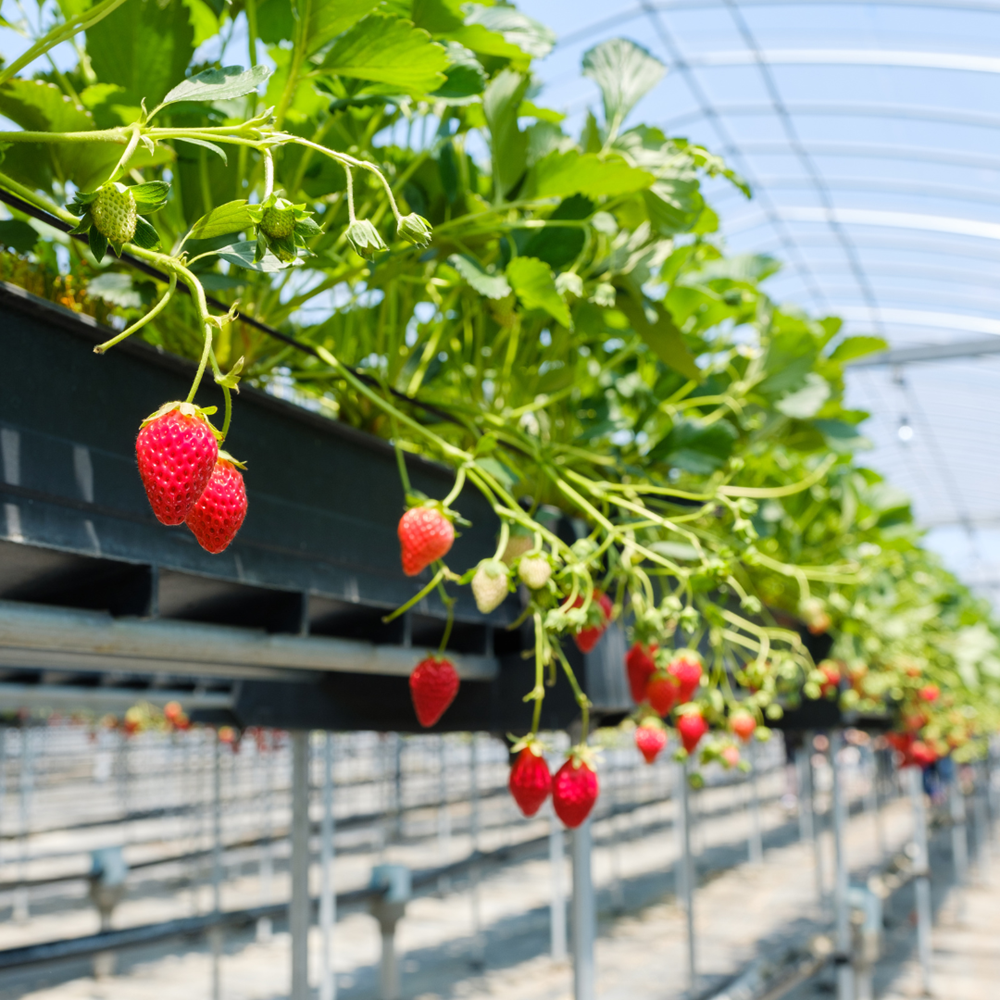So how can strawberry growers gain an edge with their existing production, or even move into the strawberry market for the first time?

No longer just a seasonal favorite, for some strawberries have become a year-round staple. Warned off refined sugar, many consumers are looking for naturally sweet fruit, healthier eating habits, and in some cases plant-based alternatives.
Succeeding in strawberry cultivation for those in colder climates is the theme of Svensson’s newly published Strawberry Screening Guide. For the guide, we interviewed Frank Kempkes of Wageningen University and he gives his top three recommendations below. But first, a quick backgrounder on the strawberry market drawn from our research for the screening guide.
In many markets, consumers are:
- Eating twice as many berries since the millenium. Average US per capita strawberry doubled to 6.2lb (2.81kg) in the first two decades of the 2000s according to the the USDA/Economic Research Service.
- Embracing plant-based diets and smoothies, which drives demand for fresh and frozen strawberries alike, according to The Business Research Company)
- Looking for healthier produce with the higher quality and consistency that greenhouse production can deliver, according to The American Society for Horticultural Science)
Ripe for growth?
In the Netherlands, strawberries are now the number four indoor crop. In Canada, megagrowers are adding them alongside traditional vegetable crops. Forecasting market growth has become more difficult since US tariff policy changed.
Key tariffs on fresh produce remain largely unchanged at the time of writing, however the following bullish forecasts will need to be treated with some caution.
- The global strawberry market is projected to grow from USD 15.3 billion in 2023 to 18.66 billion by 2028, with a 4.1% annual growth rate (Source: The Business Research Company).
- The frozen strawberry segment, fueled by smoothies and functional snacks, reached 2.5 billion in 2023 and is expected to grow 6.2% annually through 2032 (Source: Data Intelo).
A Veteran Researcher’s 1-2-3 for Improving Strawberry Results
Frank Kempkes is a researcher in energy and climate at Wageningen University with more than 32 years of greenhouse horticulture experience. Drawing from successful joint projects with Svensson, Kempkes shared three essential strategies for growers planting a new strawberry crop or looking to improve quality and yields in existing production.
1. Choose the Right Variety
Success begins with variety selection. Kempkes emphasizes resistant varieties to combat powdery mildew, a common issue in humid greenhouse environments.
For yield consistency, the choice between June bearers and everbearers is crucial. June bearers follow seasonal cycles and require cold periods to flower, while everbearers produce continuously but need more maintenance for ongoing truss development.
“Simply choosing a reliable or strong resistant variety can be a huge step,” says Kempkes.

June bearers require cold periods to flower and produce in seasonal cycles, while ever bearers can deliver a more consistent supply, but may involve higher crop maintenance costs.
“That’s because the ever bearers can stand for longer in your greenhouse, continuing to flower and the new trusses need attention,” says Kempkes, “while the June bearers have periods of cold before flowering and harvesting more dramatically.”
2. Manage Nighttime Heat Loss
In cold climates, heat loss at night can cause difficulties with the indoor climate that lead to dew formation and fungal diseases.
“With clear skies, the radiative exchange can cause crop temperatures to drop below the greenhouse air temperature,” Kempkes says.
Growers can address this by using screens to retain heat and reflect those radiative losses back to the canopy, particularly during late afternoons, nights, and early mornings.
3. Balance Humidity and Temperature
Strawberries prefer lower nighttime temperatures, but too much cooling increases humidity, creating disease risks.
“A low temperature makes it difficult to prevent the humidity from rising too high,” Kempkes points out. He suggests combining ventilation strategies, careful heating, and smart screening to maintain balance.
Integrated Pest Management (IPM) is also key to controlling pests like aphids in the stable greenhouse environment.
Strawberries and climate precision
For growers, strawberries represent a high-value crop with promising consumer demand, premium pricing potential, and almost year-round marketability. Success requires precision in climate control, thoughtful variety selection, and the right screening and ventilation strategies to balance heat, humidity, and energy use.
Our Strawberry Screening Guide was created for growers in colder regions. The guide combines a full interview with Frank Kempkes with Svensson’s climate consultants Ton Habraken and Joris Vermonden. Inside, you will find screening, ventilation, and lighting strategies to help you succeed with one of the world’s fastest-growing soft fruits.
